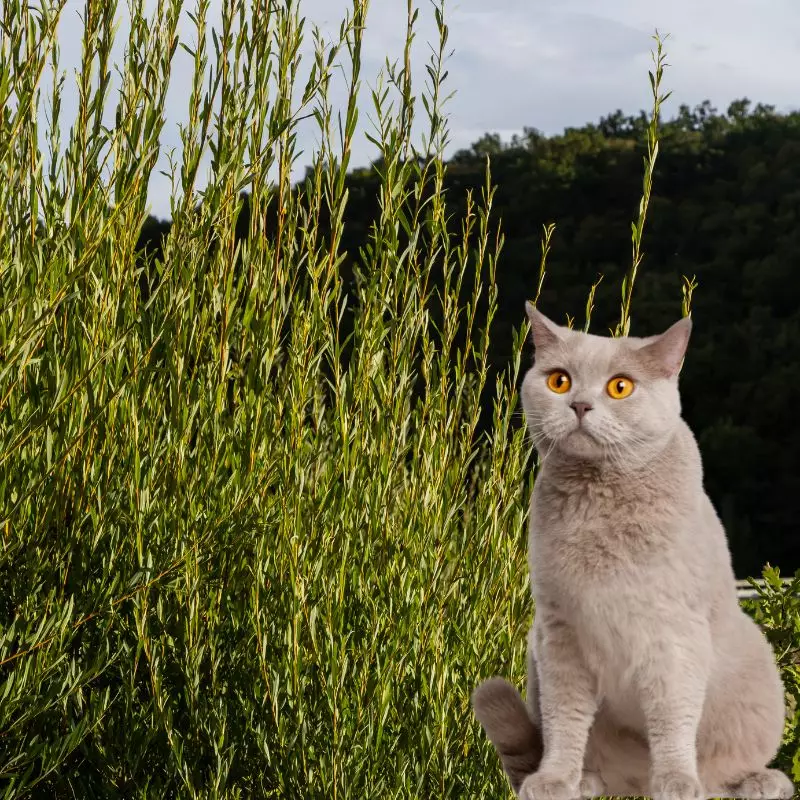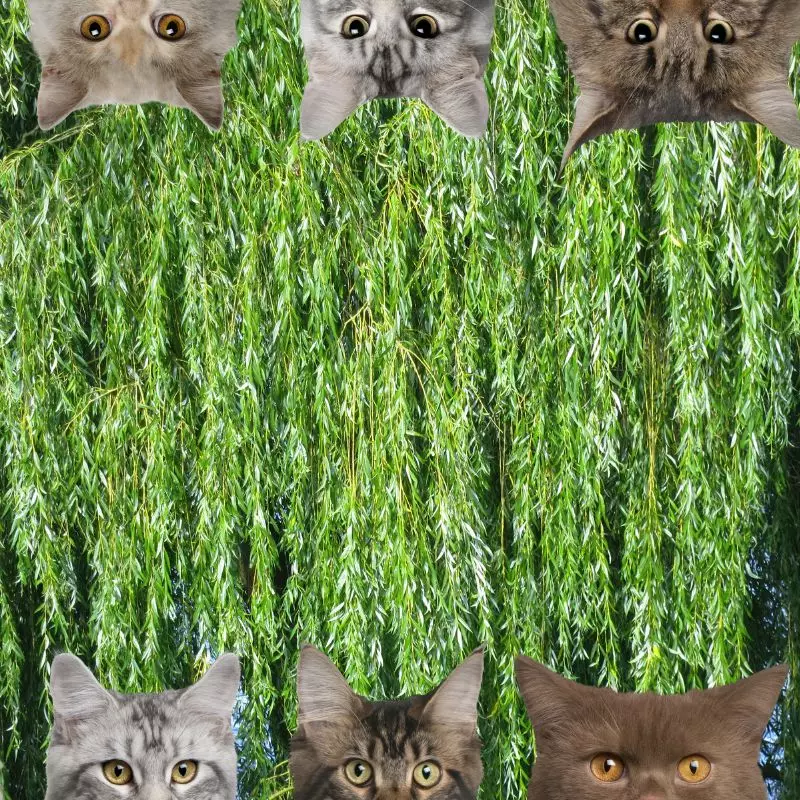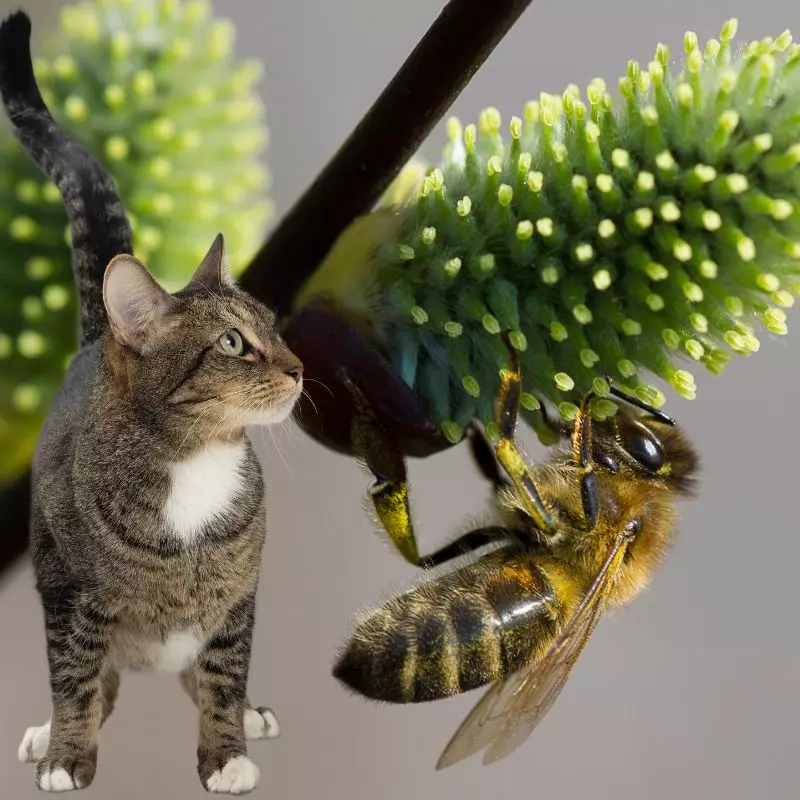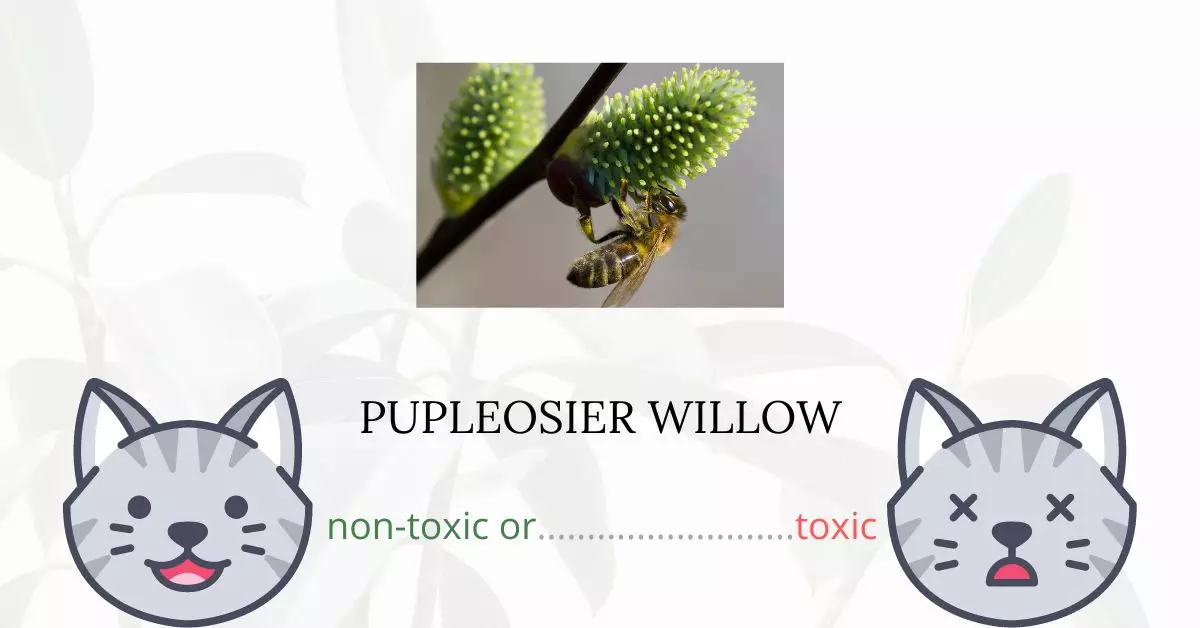Pupleosier Willow, also known as Salix purpurea, can pose risks to cats when consumed in excessive amounts. While it might not be inherently toxic, the presence of salicin in the plant can lead to the production of salicylic acid when metabolized. High levels of salicylates can adversely affect cats, causing symptoms like ulcers, vomiting, stomach pain, and more. It’s imperative to understand that while some plants might be considered ‘safe’, the compounds within them can have varying effects based on the quantity consumed.
This article was written in collaboration with a team of experienced DVMs (doctors of veterinary medicine). Their invaluable insights ensure we provide accurate and up-to-date information on the potential risks associated with various plants, in this case, Pupleosier Willows. Additionally, our research is further backed by authoritative sources such as the ASPCA and PetMD, solidifying the credibility of our findings on every plant.
Can Cats Eat Pupleosier Willow?

Not simply a lot, but some Pupleosier Willow can be consumed by your cat. You might need to be concerned if Pupleosier Willow is ingested in excessive quantities. How come? because they contain salicin, which when metabolized produces salicylic acid. Salicylates can cause serious health problems for cats. If you give your cat too much, it could poison it and cause ulcers, vomiting, stomach pain, and other symptoms.
What is Pupleosier Willow?

Native to the British Isles, Poland, and the Baltic States, the Pupleosier Willow is a species of willow that is found throughout most of Europe and western Asia.
It is a deciduous shrub with purple-brown to yellow-brown branches that age to a pale grey color. It can reach heights of 1-3 meters. The leaves are unique for a willow since they are frequently oriented in opposite pairs rather than alternately. They are dark green on top and glaucous green underneath.
Small catkins bear blooms in the early spring are frequently purple or crimson in color, hence the species’ name (other willows mostly have whitish, yellow, or green catkins).
Keeping Cats Away From Pupleosier Willow

Push thorny yard trimmings, such as pine cones or fall leaves, into the soil around your plants. Other choices include recycled plastic carpet runners with the nub side up, stone mulch, eggshells, holly cuttings, and so forth.
Cats’ favorable associations with your garden can be broken with moderate spraying of water from a spray bottle. Sprinkler systems that are actuated by movement can also deter cats. Just remember when they’re on and follow the rules during the summer water shortages.
A fence made of wire mesh can be used as a barrier. The majority advise 5.1 by 5.1-centimeter squares and a height of at least 1.8 meters. It is even better with an overhang.
Plants to Avoid For Your Cats
If you are a cat owner and unsure if the plants growing in your yard are harmful to your cats, check out this list of toxic plants for cats. You can also check our list of non-toxic plants for cats.





